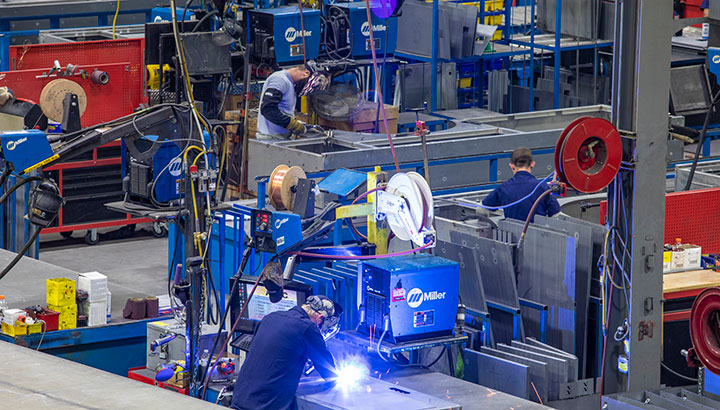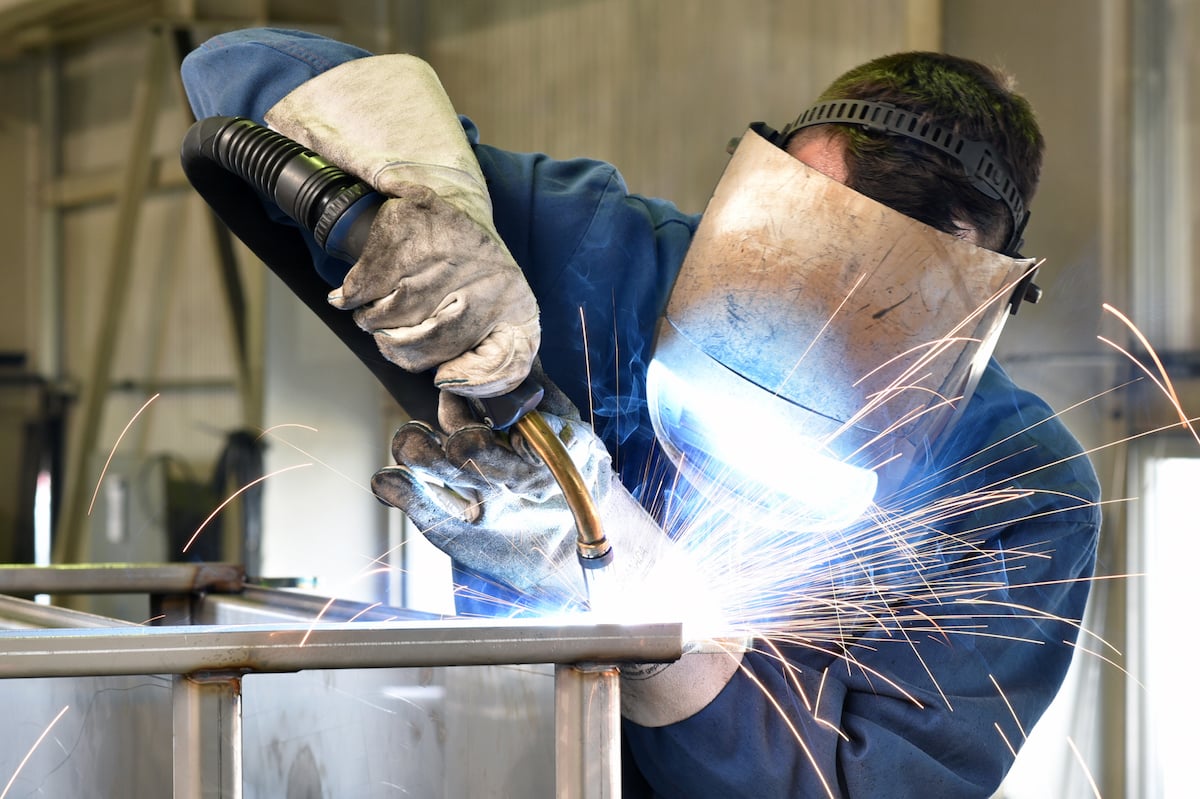Usual Welding Repair Work Issues and Just How to Address Them Efficiently
Welding repairs commonly run into a range of issues that can jeopardize the integrity of the end product. Typical troubles consist of poor penetration, porosity, and imbalance, among others. Each defect offers one-of-a-kind challenges that need particular methods for resolution. Comprehending these concerns is vital for welders intending to boost their abilities and end results. This conversation will discover these typical welding repair service issues and effective techniques to address them.
Insufficient Infiltration
Insufficient infiltration occurs when the weld steel stops working to fully fuse with the base product, resulting in weak joints and prospective architectural failings. This concern typically stems from insufficient warm input, inaccurate electrode angle, or incorrect welding rate. Welders may encounter poor infiltration as a result of a miscalculation of the essential parameters for a particular material thickness or kind. Additionally, contamination on the base material's surface area can hinder effective bonding, aggravating the trouble. To resolve poor infiltration, welders need to guarantee proper settings on their devices and preserve a tidy work surface area. Regular examination of welds is advised to identify any kind of shortages early, allowing for timely improvements and the avoidance of jeopardized structural stability in bonded assemblies.
Porosity
Porosity is a common flaw in welded joints that materializes as little gas bubbles caught within the weld steel. This issue can compromise the honesty of the weld, causing reduced strength and prospective failure under stress and anxiety. Belgrade Welding. Porosity typically emerges from contamination, dampness, or inappropriate welding strategies, which allow gases to run away into the molten weld swimming pool. To resolve porosity, welders need to ensure correct surface preparation, maintain a clean working setting, and make use of suitable welding specifications. Additionally, choosing the right filler product and securing gas can reduce gas entrapment. Regular evaluation and testing of welds can help determine porosity early, ensuring timely corrective activities are taken, consequently protecting the quality and reliability of the welded framework
Imbalance
Imbalance in welding can arise from numerous factors, consisting of improper configuration and thermal expansion. Understanding the source is crucial for effective resolution. A number of modification methods are readily available to straighten components and assure architectural honesty.
Causes of Misalignment
Welding misalignment commonly comes from a range of underlying concerns that can compromise structural integrity. One main cause is incorrect fit-up of parts before welding, which can bring about spaces and uneven surface areas. Variations in thermal development during the welding procedure can likewise cause distortion, specifically if the materials being joined have different coefficients of expansion. Furthermore, inadequate clamping and fixturing might fall short to hold elements securely in position, causing motion during welding. Poorly maintained tools, consisting of welding devices and tools, might present variances in the weld grain, additional contributing to misalignment. Operator error, stemming from insufficient training or experience, can additionally play a considerable function in developing misaligned welds.

Modification Strategies Available
Attending to misalignment effectively calls for a combination of rehabilitative methods tailored to the details problems available. One typical approach is the usage of jigs or components to hold elements in the appropriate placement throughout welding, ensuring constant alignment. Furthermore, preheating the products can help in reducing distortion and enhance fit-up. For substantial misalignment, mechanical adjustment techniques, such as making use of hydraulic jacks or clamps, can be used to remedy the position before welding. Post-weld heat treatment may additionally be needed to alleviate tensions triggered by misalignment. Cautious inspection and adjustment during the arrangement phase can prevent imbalance issues from becoming considerable problems, promoting a smoother welding process and improving total architectural honesty.
Distortion
Distortion is a typical difficulty in welding that can develop from different elements, including unequal heating & cooling. Comprehending the causes of distortion is vital for implementing reliable prevention strategies. Addressing this problem not only enhances structural honesty however also enhances the overall quality of the weld.
Reasons for Distortion
When based on the intense warm of welding, materials often undergo modifications that can bring about distortion. This phenomenon largely develops from thermal expansion and contraction during the welding procedure. As the weld area warms up, the product broadens; upon air conditioning, it acquires, which can create internal stresses. In addition, uneven home heating across a work surface can aggravate these tensions, resulting in warping or bending. The sort of product also plays a substantial duty; metals with varying thermal conductivity and coefficients of development might respond in different ways, leading to unpredictable distortions. Furthermore, inadequate joint layout and insufficient fixturing can contribute to misalignment throughout welding, boosting the chance of distortion. Comprehending these causes is essential for effective welding fixing and avoidance approaches.
Avoidance Techniques
Effective avoidance strategies for distortion throughout welding emphasis on regulating heat input and making certain correct joint layout. Maintaining a regular heat input aids to decrease thermal expansion and contraction, which can lead to distortion. Using techniques such as pre-heating the work surface can additionally decrease the temperature level slope, promoting consistent heating. Additionally, selecting suitable joint designs, such as T-joints or lap joints, can enhance stability and reduce stress and anxiety focus. Carrying out proper fixturing to protect the work surfaces in position further help in maintaining alignment during the welding procedure. Finally, staggered welding sequences can disperse warm a lot more evenly, avoiding local distortion. By using these strategies, welders can significantly decrease the likelihood of distortion and boost the overall top quality of their welds.
Cracking
Splitting is a common concern encountered in welding fixings, frequently arising from different aspects such as improper air conditioning rates, material choice, or insufficient joint prep work. The event of fractures can significantly compromise the honesty of the weld, leading to prospective failings throughout operation. To address this issue, welders have to initially analyze the origin creates, making sure that materials are compatible and properly chosen for the certain application. Additionally, managing the cooling rate during the welding procedure is essential; fast cooling can induce anxiety and bring about cracking. Correct joint design and prep work additionally add to reducing the danger. Carrying out these approaches can enhance weld top quality and longevity, inevitably lowering the likelihood of breaking in completed weldments.
.jpeg?width=1200&height=675&name=Mold%20Repair%20Welding%20Image%20(1).jpeg)
Incomplete Fusion
A significant problem in welding repair work is insufficient fusion, which happens when the weld metal does not appropriately bond with the base material or previous weld passes - Montana Mobile Welding and Repair. This problem can bring about weaknesses in the joint, potentially jeopardizing the integrity of the welded framework. Elements adding to insufficient fusion consist of inadequate heat input, inappropriate welding technique, and contamination of the surface areas being signed up with. To address this issue efficiently, welders need to ensure appropriate pre-weld cleaning and surface preparation, along with readjust their welding parameters to attain adequate infiltration and combination. Regular evaluation during the welding procedure can likewise aid recognize insufficient blend early, permitting timely rehabilitative procedures to enhance the overall quality of the weld
Overheating
While welding repairs can improve structural stability, overheating presents a significant obstacle that can bring about product deterioration. Too much warmth throughout welding can modify the mechanical buildings of metals, leading to decreased toughness, enhanced brittleness, and bending. This phenomenon continue reading this is particularly vital in high-stress applications where structural reliability is paramount. Determining getting too hot can entail visual inspections for discoloration or distortion, as well as keeping track of temperature during the welding process. To alleviate the threats related to overheating, welders must use proper strategies, such as managing warmth input, readjusting travel speed, and utilizing appropriate filler materials. Additionally, carrying out pre- and post-weld warm therapies can help bring back product residential or commercial properties and enhance the overall quality of the repair, guaranteeing long-lasting performance and security.
Frequently Asked Inquiries
What Are the Typical Indicators of a Welding Flaw?

Exactly How Can I Examine My Welds for High quality?
To test welds for top quality, one click can use aesthetic assessments, ultrasonic screening, and radiographic approaches. Each technique assures structural honesty, determines defects, and verifies adherence to defined standards, eventually boosting the dependability of the welded joints.
What Security Precautions Should I Take While Welding?
When welding, one ought to prioritize safety by putting on suitable personal safety devices, guaranteeing appropriate ventilation, securing combustible materials away, preserving a clean workspace, and being aware of surroundings to avoid mishaps and injuries.
Can I Repair a Weld Without Redoing the Entire Joint?
Repairing a weld without remodeling the entire joint is possible, depending on the damages (Belgrade Welding). Techniques such as grinding, adding filler material, or using a welding process can successfully deal with particular problems while protecting the surrounding structure
What Equipment Are Crucial for Reliable Welding Repair Works?
Important tools for reliable welding repairs consist of a welding maker, cable brush, grinder, protective gear, clamps, and filler products. Each device plays a vital function in making sure high quality and safety and security during the repair procedure. Porosity usually occurs from contamination, wetness, or improper welding techniques, which allow gases to leave into the molten weld swimming pool. Improperly conserved equipment, including welding machines and devices, may introduce disparities in the weld grain, more contributing to misalignment. When subjected to the extreme warm of welding, materials commonly undergo modifications that can lead to distortion. Splitting is an usual issue run into in welding repair work, typically resulting from numerous elements such as incorrect cooling rates, product pop over to these guys choice, or inadequate joint preparation. A significant problem in welding fixings is insufficient blend, which occurs when the weld metal does not appropriately bond with the base material or previous weld passes.